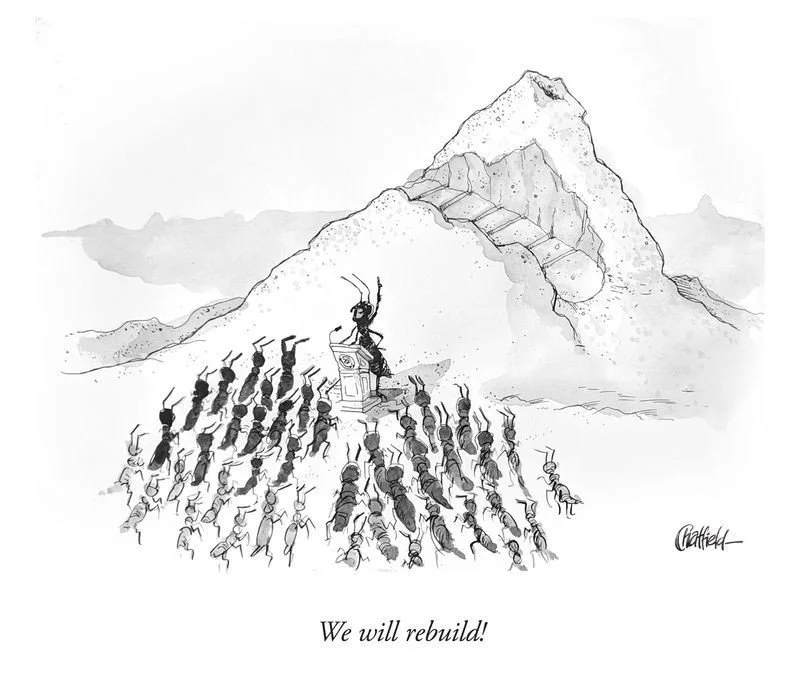Protecting the Culture
Building a community is only the first step in leadership. While creating that sense of connection gives teams a foundation, protecting the culture is what ensures it endures. Culture is more than shared values written down or good intentions expressed in meetings; it is the lived reality of how people treat one another, how decisions are made, and how standards are upheld. Without leaders who actively safeguard it, culture can weaken, opening the door to complacency, negativity, or behaviors that chip away at trust and reliability.
At 3M Chem Ops, protecting culture is more than just maintaining a positive atmosphere; it is about preserving an environment where safety, accountability, and operational discipline are integral to day-to-day life. A healthy culture makes it possible for discipline to move beyond being a checklist or a set of rules and instead become a way of working that employees truly believe in and carry forward.
Self-Assessment: Protecting the Culture
Please take a few moments to contemplate the following self-reflection questions. Where can you identify opportunities for personal growth in your leadership?
Do I notice and respond to early warning signs that the culture might be shifting (for example, when people disengage or cut corners)?
How consistent am I in reinforcing the team’s values, even when we’re under pressure or short on time?
Do I actively address behaviors that go against our standards, or do I sometimes hope they’ll resolve on their own?
When someone on my team speaks up with a concern or idea, do I follow up in a way that shows their input matters?
Have I clearly communicated what kind of behavior is expected in meetings, on the floor, and during shift transitions?
Do I give as much attention to reinforcing positive behavior as I do to correcting negative behavior?
How do I ensure new employees learn the “real” culture—not just the written rules, but how things are done and how people are treated?
When I see a pattern of behavior that could hurt trust or safety, do I take action or wait for someone else to step in?
Remember, this self-assessment is just a starting point for understanding your knowledge of Protecting the Culture as a leader. It's essential to reflect on your responses and actively work on areas where improvement is needed. Additionally, working with your ECFL Leadership Coach or seeking feedback from a trusted mentor can provide valuable insights into your strengths and weaknesses.
“Culture is how employees’ hearts and stomachs feel about Monday morning.”
Recent research highlights what effective leaders already understand: a strong sense of community is essential for building the trust, ownership, and accountability that operational discipline depends on. The Mind the Workplace 2024 survey by Mental Health America, which gathered feedback from nearly 4,000 employees across 21 industries, found that environments grounded in trust and respect led to stronger belonging and more proactive problem-solving. In contrast, employees in workplaces where community was neglected reported more stress, disengagement, and a higher likelihood of leaving.
To apply these insights, leaders need to build habits that protect culture just as intentionally as they protect performance.
Monitor culture like performance
Track cultural health with the same cadence used for production and quality. Choose a small set of leading indicators such as participation in handoffs, near-miss reporting follow-through, or meeting airtime balance, review them in tier meetings, and agree on one concrete adjustment for the next cycle so improvement becomes routine rather than ad hoc.
Reset unhelpful language in the moment
Replace culture-eroding lines with culture-protecting lines, and use them consistently:
From “That is just how we talk” to “That comment was not respectful. Let’s reset and keep going.”
From “We do not have time for this” to “Take one minute to reset so the work stays solid.”
From “Let’s not make this a big deal” to “This matters. Say the impact, name our standard, and agree on the next step.”
From “Don’t bring problems, bring solutions” to “Bring what you see. We will work on the solution together.”
From “It was only a joke” to “Jokes are fine when they are not at someone’s expense.”
“Leaders become great not because of their power but, because of their ability to empower others.”
Community and culture last when people expect fair treatment, see support before they ask, and feel respect in both big and small moments. Confidence grows when promises are kept, feedback is taken seriously, and leaders follow through, so the group stays steady under pressure and commitment deepens.
Neglect changes that tone. People go quiet, pull back, and stop offering ideas; corners get cut, accountability blurs, and standards start to look optional. These outcomes are preventable when leaders pay attention to everyday moments, notice and respond in real time, and reinforce clear standards of connection and respect. Protecting culture gives people confidence that they are part of something stable and worth contributing to, which strengthens performance, reliability, and long-term results.
Community and culture take shape in small moments, and those same moments can quietly undo them; the two short scenes below show how easily that shift can happen, and how to prevent it.
Scenario 1: The Broken Bond
Molly Cule is new to the team. She shows up eager to contribute and wants to prove she belongs. During her first week, she offers an idea in a shift handoff meeting that could make a routine process safer and more efficient. The conversation keeps moving, and no one acknowledges what she said. She thinks they must not have heard her. That’s alright.
Later, when she tries again, two coworkers talk over her, and the supervisor does nothing to redirect the group. Molly leaves the meeting feeling completely discouraged. By the end of the month, she stops offering ideas at all. She still does her job, but her morale is low, and she feels more like an outsider than part of the team. The culture around her quietly signals that her voice doesn’t matter, and the community she had hoped to find feels closed off.
Scenario 2: Positive Reaction
Molly eventually joins a new team with a different supervisor. In her first meeting, she hesitantly shares the same idea. This time, the supervisor pauses and says, “Thanks for raising that, Molly. Let’s take a closer look.” When someone interrupts, the supervisor steps in and says, “Hold on, let’s let Molly finish her thought.” That simple gesture makes a difference. Molly feels her input matters, and the team learns that everyone’s voice counts. As time goes on, Molly becomes more confident, and her teammates start to engage with her ideas. She no longer feels alone; instead, she’s part of a group that values her effort and supports her place in the team.
At this point, the differences between the two situations should be clear to us: in the first story, neglect creates silence and disengagement. In the second, the support Molly receives helps her trust the team and feel like she belongs. She’s the same person in both cases, but the leadership response defines whether she grows into an engaged contributor or retreats into quiet compliance.
Every team has a culture, whether leaders choose to actively shape it or ignore it. Regardless, people notice. If leaders stay alert and act with fairness, the culture stays strong. Protecting it is how you make sure the next person who joins finds an environment that lifts them up instead of wearing them down.
When we as leaders protect culture, we create conditions where shortcuts are resisted, standards are reinforced, and teams remain committed not only to delivering results but also to supporting one another in achieving them. A leader who safeguards community ensures that no one feels alone in the work; a leader who safeguards culture ensures that no one doubts the standards that guide it. Here are some best practices to help you protect your community’s culture:
Best Practices for Protecting the Culture
Make Expectations Clear: People can’t live up to standards they don’t know. Spell out what respect looks like in practice: listening fully, keeping commitments, and treating feedback seriously. When expectations are clear and consistent, the team knows exactly how to show up.
Notice Early Warning Signs: Your company’s culture won’t unravel overnight. It frays slowly, in small signs: sarcasm, snark, side comments, or someone withdrawing from the group. If you pay attention to those signals and step in early, you prevent bigger problems from taking root. Acting early shows the team you are serious about the space you all share.
Correct Calmly and Fairly: When a line is crossed, address it directly but without drama. Focus on the behavior, restate the standard, and then move forward. Fair and consistent correction teaches people that the culture is real and that it applies to everyone.
Notice the Good as Well as the Gaps: If leaders only step in when something goes wrong, the team starts to feel weighed down. Calling out the good—like when someone listens carefully, helps a coworker, or makes a safe choice—shows that the right actions matter too.
Always Circle Back: When someone speaks up with a concern, they watch closely to see what happens next. If nothing is said, trust fades. Leaders who circle back, even with a quick update or explanation, show that voices are heard and that speaking up makes a difference.
Check the Pulse Regularly: Culture shifts over time, and leaders can catch changes early by asking just a few simple questions on a regular basis: Do I feel respected? Do I feel heard? Do I know what is expected? Tracking these responses weekly or every other week reveals trends the team might not say out loud. Acting on even one small insight and letting the team know what changed shows that feedback leads to action. A light pulse keeps culture grounded in how people feel today, not just how they felt weeks ago.
Protecting culture is not about policing every word. It’s about noticing early, correcting fairly, repairing when needed, and making sure concerns lead to action. Leaders who do this create a steady environment where people know they are safe, respected, and part of something worth protecting.
At 3M Chem Ops, protecting culture means staying alert to these early signs that something is slipping, because operational discipline relies on the shared sense of responsibility a community brings. When people speak up, follow through, and hold one another to clear expectations, consistency becomes part of the culture.
Reflection Questions:
When was the last time I acted quickly on a small signal before it grew into a bigger issue?
How do I show my team that their contributions are noticed, not just their mistakes?
Where might I be silent on concerns that need a clear follow-up?
In what ways do I protect both the standards of our culture and the sense of community that holds us together?
Strengthen your understanding of Protecting the Culture by sticking with the following resources. Use this opportunity to note new insights and adhere to practices that will enhance your leadership journey.
2024 Workplace Wellness Research | Mental Health America
Building a Sense of Community in the Workplace: The Key to Employee Engagement









